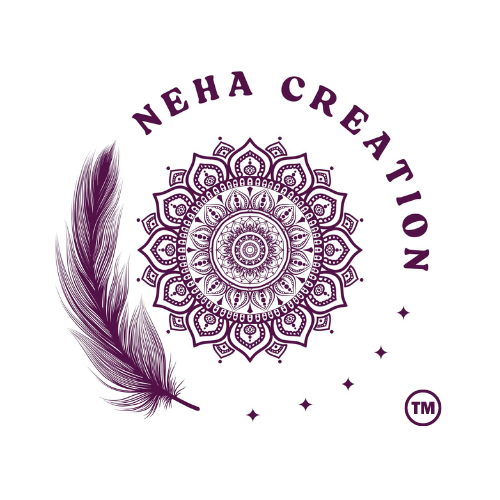Introduction
In today's fast-paced world, professionals face constant pressure, deadlines, and work-related stress. Finding a healthy and effective way to unwind is crucial for maintaining mental well-being. One such tool that has gained popularity among professionals is Mandala Art. More than just an artistic hobby, mandala drawing is a form of mindfulness, stress relief, and creative meditation. This blog explores how professionals can integrate Mandala Art into their routines for stress-free success.
What is Mandala Art?
Mandala, derived from the Sanskrit word for "circle,", represents wholeness and harmony. Mandala art consists of intricate patterns, geometric shapes, and symmetrical designs that encourage focus and relaxation. Traditionally used in spiritual practices, mandala art has now become a popular tool for meditation, therapy, and self-expression.
Why Professionals Should Practice Mandala Art
1. Reduces Stress and Anxiety
Work-related stress can negatively impact productivity and mental health. Mandala drawing engages the brain in a meditative state, reducing anxiety and promoting relaxation. Focusing on patterns helps professionals detach from worries and find inner peace.
2. Boosts Creativity and Problem-Solving Skills
Creativity is essential in any profession, whether you’re in business, marketing, design, or management. Mandala art activates the right hemisphere of the brain, improving creative thinking, innovation, and problem-solving skills. A daily mandala practice can inspire fresh ideas and out-of-the-box solutions.
3. Enhances Focus and Mindfulness
Professionals often struggle with distractions, leading to decreased productivity. Creating mandalas requires deep concentration, which trains the mind to stay present. This enhanced mindfulness improves focus, efficiency, and task management at work.
4. Encourages Emotional Balance
Balancing emotions is crucial for workplace success. Mandala drawing fosters self-awareness and emotional stability, helping professionals manage stress, handle conflicts, and improve interpersonal relationships.
5. Acts as a Digital Detox
With prolonged screen time, professionals face eye strain, mental fatigue, and burnout. Engaging in mandala Art offers a much-needed break from screens, providing a refreshing and rejuvenating experience.
How to Integrate Mandala Art into Your Professional Life
1. Start with Simple Designs
If you're new to mandala Art, begin with basic patterns and gradually explore intricate designs. Use mandala coloring books, printable templates, or guided workshops to get started.

2. Dedicate 10-15 Minutes a Day
Even a short session of mandala drawing can have significant benefits. Set aside 10-15 minutes during breaks, early mornings, or before bed to relax and unleash creativity.
3. Use Digital Mandala Apps
For professionals with limited time, digital mandala apps offer a convenient way to create and color mandalas on tablets or smartphones. These apps provide access to various templates, tools, and color palettes for easy relaxation.
4. Incorporate Mandala Art in Team Activities
Encourage team-building activities centered around mandala drawing. Hosting mandala workshops in offices fosters collaboration, relaxation, and creativity among employees.
5. Decorate Your Workspace with Mandalas
Surrounding yourself with mandala art can have calming effects. Decorate your workspace with mandala paintings, framed prints, or DIY mandala coasters to enhance positivity and motivation.

The Science Behind Mandala Art and Stress Relief
1. Activates the Parasympathetic Nervous System
Engaging in mandala drawing triggers the parasympathetic nervous system, which reduces cortisol levels (stress hormone) and induces a relaxation response.
2. Promotes Mindfulness-Based Stress Reduction (MBSR)
Mandala art aligns with MBSR techniques, a clinically proven method for reducing stress, improving focus, and enhancing emotional resilience.
3. Enhances Dopamine Release
Artistic activities, including mandala drawing, boost dopamine levels, leading to improved mood, motivation, and cognitive function.
Tools and Materials Needed for Mandala Art
To begin your mandala journey, you will need:
-
Drawing Tools: Pencils, fineliners, and erasers.
-
Coloring Materials: Gel pens, markers, watercolors, or acrylic paints.
-
Measuring Tools: Compass, protractor, and ruler for symmetry.
-
Accessories: Dotting tools and brushes for advanced designs.
Conclusion
Mandala art is more than just a hobby—it’s a powerful tool for stress management, creativity, and mindfulness. By incorporating mandala drawing into daily routines, professionals can achieve a better work-life balance, improved focus, and a more relaxed mindset. Whether through traditional hand-drawn designs or digital platforms, mandala art offers a simple yet effective way to unwind and thrive in a high-pressure professional world.
Start your mandala journey today and experience the transformative power of art for stress-free success! 🎨✨

